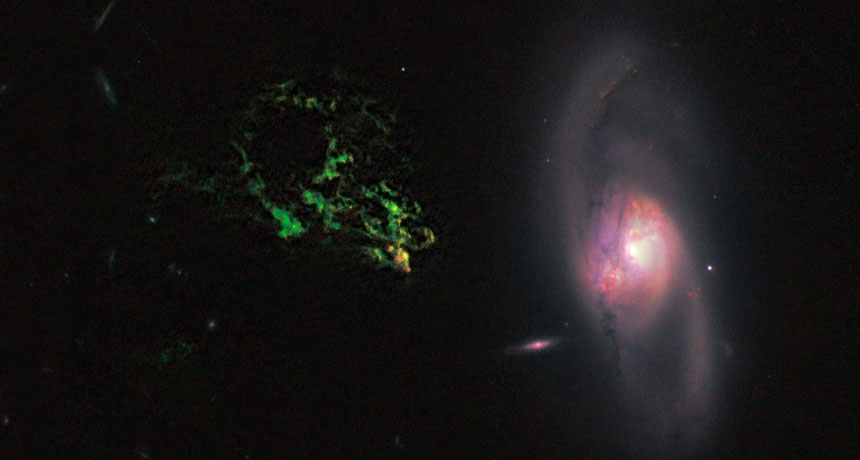Here’s what really happened to Hanny’s Voorwerp
Astronomers can finally explain a gas cloud’s strange glow

GLOWING GAS Hanny’s Voorwerp, the greenish smudge at the left of this image, is glowing thanks to photons from a feasting black hole in the galaxy at right.
NASA, ESA, W. Keel (Univ. Alabama), et al., Galaxy Zoo Team







